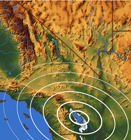Beginning in May 2012, Regional Reports has been consolidated with several other BLS publications into a new series of reports called Beyond the Numbers. Beyond the Numbers illuminates interesting, timely BLS data on discrete topics and is oriented towards a general audience.
Regional Reports
Prepared in the BLS Regional Offices, Regional Reports provide analysis of state and local area employment, earnings, and other economic data.
November 2011
High-tech Industries in Massachusetts: Employment and Wage Trends during the 2001–2009 Period
The Massachusetts economy and its high-tech industries entered the 21st century on a downward trend. From 2001–2009, total private employment declined by about 141,000 or 4.9 percent; and, collectively, high-tech industries shed 47,000 jobs (14.8 percent of total high-tech employment). Still, high-tech employment remains important to the Massachusetts economy as nearly 1 of every 5 dollars paid in wages in Massachusetts in both 2001 and 2009 were attributed to the high-tech sector.
Complete report:
High-tech Industries in Massachusetts: Employment and Wage Trends during the 2001–2009 Period
(HTML) (PDF)
June 2011
Labor market risks of a magnitude 7.8 earthquake in southern California
 In this report, we analyze and map data from the Quarterly Census
of Employment and Wages to assess the potential business and economic losses if a 7.8 magnitude earthquake were to occur in southern California. This report may be used to inform individuals, schools, businesses, organizations, communities, and governments about the effects of a major earthquake in their communities.
In this report, we analyze and map data from the Quarterly Census
of Employment and Wages to assess the potential business and economic losses if a 7.8 magnitude earthquake were to occur in southern California. This report may be used to inform individuals, schools, businesses, organizations, communities, and governments about the effects of a major earthquake in their communities.
Complete report:
Labor market risks of a magnitude 7.8 earthquake in southern California
(HTML) (PDF)
October 2009
Colleges and Universities in the New York Metropolitan Area: Rapid Growth in Employment and Wages
 When people think of New York, Wall Street and Broadway theaters come to mind most often, but in fact the New York area is also a major center for higher education. Indeed, the New York metropolitan area is home to more than 240 private colleges and universities employing about 97,000 workers and attracting students and faculty from around the globe. Utilizing employment and wage data from the Bureau of Labor Statistics (BLS) Quarterly Census of Employment and Wages (QCEW) for the years 1990 and 2007, this report analyzes the labor market impact and the influence of these institutions of higher education on the New York area economy.
When people think of New York, Wall Street and Broadway theaters come to mind most often, but in fact the New York area is also a major center for higher education. Indeed, the New York metropolitan area is home to more than 240 private colleges and universities employing about 97,000 workers and attracting students and faculty from around the globe. Utilizing employment and wage data from the Bureau of Labor Statistics (BLS) Quarterly Census of Employment and Wages (QCEW) for the years 1990 and 2007, this report analyzes the labor market impact and the influence of these institutions of higher education on the New York area economy.
Complete report:
Colleges and Universities in the New York Metropolitan Area: Rapid Growth in Employment and Wages
(HTML)
(PDF)
August 2009
After the Dot-Com Bubble: Silicon Valley High-Tech Employment and Wages in 2001 and 2008
 Between 2001 and 2008, the Silicon Valley underwent a transformation. Following the peak of the high-tech boom, employment in Silicon Valley high-tech industries declined by about 17 percent, representing a loss of slightly more than 85,000 jobs; however, average wages grew by nearly 36 percent in these industries during the same period. Moreover, some industries grew in terms of their relative concentration in the local economy, while other industries shrunk.
Between 2001 and 2008, the Silicon Valley underwent a transformation. Following the peak of the high-tech boom, employment in Silicon Valley high-tech industries declined by about 17 percent, representing a loss of slightly more than 85,000 jobs; however, average wages grew by nearly 36 percent in these industries during the same period. Moreover, some industries grew in terms of their relative concentration in the local economy, while other industries shrunk.
Complete report:
After the Dot-Com Bubble: Silicon Valley High-Tech Employment and Wages in 2001 and 2008
(HTML)
(PDF)
February 2009
The Prominence of Colleges and Universities in the Boston Metropolitan Area
The Boston metropolitan area is recognized by many for its concentration of prestigious private colleges and universities. The metropolitan area is home to over 80 private colleges and universities employing 68,600 people and attracting over 360,000 students from all over the world. This report uses employment and wage data from the Bureau of Labor Statistics' Quarterly Census of Employment and Wages (QCEW) program for the years 1990 and 2006 to analyze the labor market impact and contribution of these institutions of higher education to the Boston area economy.
Complete report in PDF:
The Prominence of Colleges and Universities in the Boston Metropolitan Area
September 2007
Labor market risks of a magnitude 6.9 earthquake in Alameda County
 According to the U.S. Geological Survey, "On average the Hayward fault generates a damaging earthquake every 150 years..." The last major earthquake on the Hayward fault occurred in 1868 and was known as the "Great San Francisco Earthquake" until the more famous quake of 1906. The Hayward fault is particularly important because it underlies Alameda County, a populous, urban area in Northern California, and is estimated to have a 27 percent chance of experiencing a seismic event by 2032.
According to the U.S. Geological Survey, "On average the Hayward fault generates a damaging earthquake every 150 years..." The last major earthquake on the Hayward fault occurred in 1868 and was known as the "Great San Francisco Earthquake" until the more famous quake of 1906. The Hayward fault is particularly important because it underlies Alameda County, a populous, urban area in Northern California, and is estimated to have a 27 percent chance of experiencing a seismic event by 2032.
Complete report in PDF:
Labor market risks of a magnitude 6.9 earthquake in Alameda County
 In this report, we analyze and map data from the Quarterly Census
of Employment and Wages to assess the potential business and economic losses if a 7.8 magnitude earthquake were to occur in southern California. This report may be used to inform individuals, schools, businesses, organizations, communities, and governments about the effects of a major earthquake in their communities.
In this report, we analyze and map data from the Quarterly Census
of Employment and Wages to assess the potential business and economic losses if a 7.8 magnitude earthquake were to occur in southern California. This report may be used to inform individuals, schools, businesses, organizations, communities, and governments about the effects of a major earthquake in their communities.
 When people think of New York, Wall Street and Broadway theaters come to mind most often, but in fact the New York area is also a major center for higher education. Indeed, the New York metropolitan area is home to more than 240 private colleges and universities employing about 97,000 workers and attracting students and faculty from around the globe. Utilizing employment and wage data from the Bureau of Labor Statistics (BLS) Quarterly Census of Employment and Wages (QCEW) for the years 1990 and 2007, this report analyzes the labor market impact and the influence of these institutions of higher education on the New York area economy.
When people think of New York, Wall Street and Broadway theaters come to mind most often, but in fact the New York area is also a major center for higher education. Indeed, the New York metropolitan area is home to more than 240 private colleges and universities employing about 97,000 workers and attracting students and faculty from around the globe. Utilizing employment and wage data from the Bureau of Labor Statistics (BLS) Quarterly Census of Employment and Wages (QCEW) for the years 1990 and 2007, this report analyzes the labor market impact and the influence of these institutions of higher education on the New York area economy.
 According to the U.S. Geological Survey, "On average the Hayward fault generates a damaging earthquake every 150 years..." The last major earthquake on the Hayward fault occurred in 1868 and was known as the "Great San Francisco Earthquake" until the more famous quake of 1906. The Hayward fault is particularly important because it underlies Alameda County, a populous, urban area in Northern California, and is estimated to have a 27 percent chance of experiencing a seismic event by 2032.
According to the U.S. Geological Survey, "On average the Hayward fault generates a damaging earthquake every 150 years..." The last major earthquake on the Hayward fault occurred in 1868 and was known as the "Great San Francisco Earthquake" until the more famous quake of 1906. The Hayward fault is particularly important because it underlies Alameda County, a populous, urban area in Northern California, and is estimated to have a 27 percent chance of experiencing a seismic event by 2032.